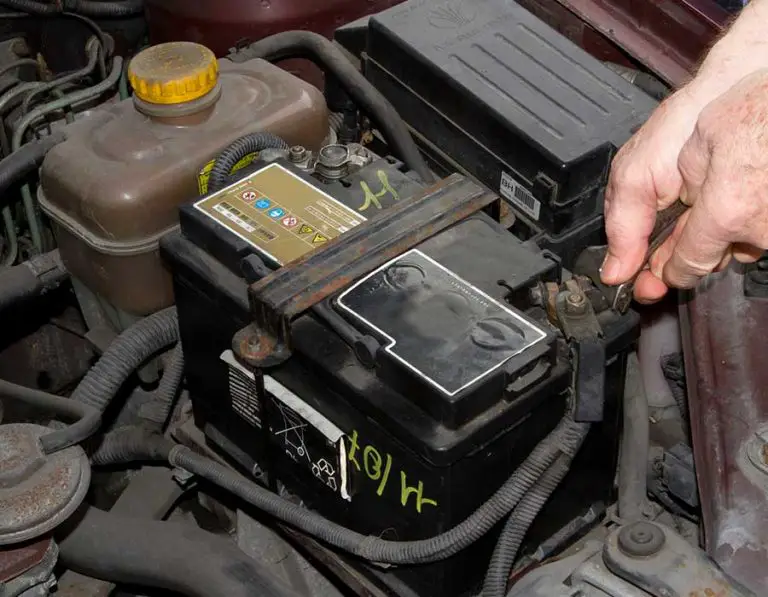How To Read A Battery Charger Ammeter – Complete Guide
Ammeters are called ampere meters or amperage meters, which measure the power of an electrical current or amperage. Thus, these meters essentially measure the battery current of the electrical circuit, functioning as flow meters under normal circumstances.
The alternator output is measured through the heavy gauge wire that runs beneath the dashboard. Ammeters also measure the battery discharge incase the system alternator fails. Battery chargers amp meters provide important information about your car battery.
Method of Reading the Battery Charger Ammeter
There are four ways to read the Ammeter of a battery charger:
Connect the charger to the battery:
- Plug the charger into the battery and turn it on after the charger and the battery have been connected properly.
- You can see the needle of the meter move toward the desired ampere once the charger is turned on.
- As charging continues, the needle will correspondingly move down.
- A needle that has dropped to half the required amp is indicative that the battery is ultimately charged.
Calculation of Charge Rates:
- The charge rate is shown near the bottom of the meter.
- The battery charger will display different numbers.
- The number represents the total amps that flow into the battery between 0 and 12.
Calculation of the percent charged:
- On the amp scale, you’ll see a percent charged scale in the upper left corner.
- When your battery is charging, the needle will travel from right to left across the dial.
- A decrease in the number of amps flowing is accompanied by an increase in the proportion charged.
Two triangles – Red & Green:
- There is a small red triangle indicating that the amps are flowing at 2 amps.
- There is a larger red triangle above the charger, indicating the number of amps flowing into the battery.
- It appears that as the battery load is increased, the flow rate is reduced, moving from the right to the left and eventually reaching the green part, which represents approximately 6 amps when the battery is completely charged.
Battery charger ampmeter’s benefits
Amp meters offer a number of amazing benefits. Here are some benefits that you may find useful:
- It’s best not to overcharge your car battery because, if you don’t know how many amps are flowing into your battery.
- Your battery will have a longer lifespan if you’re skilled enough to read the charger amp meter.
- Charges the battery constantly and keeps it full.
- Your charger will apply an electric current to your battery based on how much electricity you use.
- The calculator will assist you with calculating the electric current in the battery.
Safety Tips:
When working with vehicle batteries, safety must be the number one priority. Despite their solid construction, these battery types can still emit hazardous chemicals during their chemical reactions. Thus, make sure you follow these steps to ensure your safety:
- Make sure you remove all accessories, credit cards, and mobile devices.
- Protect your eyes and hands by wearing safety goggles and gloves.
- Hydrogen gas is highly explosive when produced through the charging process.
- In the cells of the battery, sulfuric acid eats materials and fabrics, burning skin. Polyester is the best clothing material since sulfuric acid cannot destroy it.
- Make sure you pay attention to amps flowing through the electrical circuit, which could sometimes lead to fatal consequences. If you are connecting positive terminals, you must connect the positive clamp (red) to the positive terminals to the negative clamp (black).
People Might ask
How should a battery charger read when it is charged to the full? On a 12 amp charge, the needle will be around 6 amps to indicate that the battery has been fully charged. When you set your amp setting to 2, you will see a small red triangle at the end of the needle.
What are the signs that a battery charger is working? Turning on the battery charger after plugging it into a wall outlet will show the needle on the display scale moving around. In a few moments, a comfortable position will be established. Once this is done, it displays the state of charging your car’s battery is undergoing from the battery charger. This means the charger is connected correctly to the battery in your vehicle, and it is effectively charging.
What causes my battery charge needle to jump back and forth? A little needle bounce is normal when the battery charger is connected for the first time. Suppose you have an amp meter that is in good working order. There are two possible reasons for that: a poor connection to the battery or a defective battery.
Poor Connection: A charger’s clips will not make a tight connection, so its needle will jump if the battery charger’s clips aren’t properly connected. Connect the clips and disconnect the charger before you disconnect the battery. Make sure that they are again connected and that the charger is functioning.
Defective Battery: There could be something amiss with the battery, such as a full discharge which means that the battery is dead or a problem on the battery’s insides. It might be necessary to replace the car’s battery in that situation.
What is the method for knowing when a trickle charger has finished charging? Check the battery’s voltmeter, it can tell you exactly how many volts it has. During this time frame, a higher needle indicates the trickle charger is performing optimally. Upon checking the voltmeter for charging at the beginning and end of a day, for example, it might show 6V at the start but 12V at the end.
Conclusion:
Ammeter will indicate how much energy remains and the amount of time it will take to refuel. A constantly bouncing needle on the ammeter indicates a defective battery and needs to be replaced after a few seconds. There are different types of chargers. A charger may have more than one gauge or more than one needle. Despite the fact that it may be confusing at first, following the steps above will help you learn how to read an amp meter on a battery charger.






